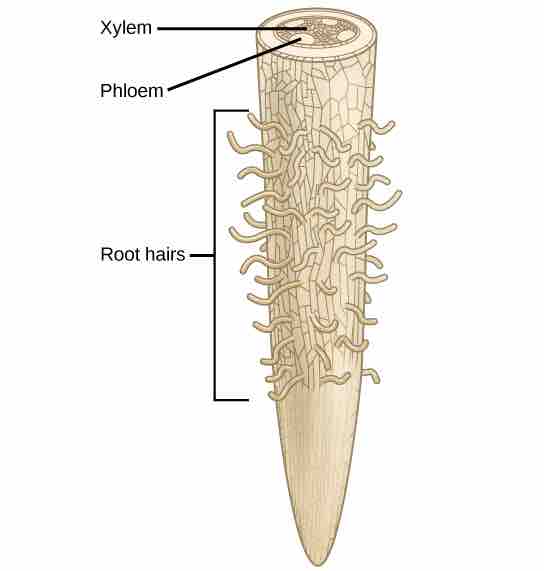The Chemical Composition of Plants
Water
Since plants require nutrients in the form of elements such as carbon and potassium, it is important to understand the chemical composition of plants. The majority of volume in a plant cell is water; it typically comprises 80 to 90 percent of the plant's total weight. Soil is the water source for land plants. It can be an abundant source of water even if it appears dry. Plant roots absorb water from the soil through root hairs and transport it up to the leaves through the xylem. As water vapor is lost from the leaves, the process of transpiration and the polarity of water molecules (which enables them to form hydrogen bonds) draws more water from the roots up through the plant to the leaves . Plants need water to support cell structure, for metabolic functions, to carry nutrients, and for photosynthesis.

Water absorption by the roots
Water is absorbed through the root hairs and moves up the xylem to the leaves.
Nutrients
Plant cells need essential substances, collectively called nutrients, to sustain life. Plant nutrients may be composed of either organic or inorganic compounds. An organic compound is a chemical compound that contains carbon, such as carbon dioxide obtained from the atmosphere. Carbon that was obtained from atmospheric CO2 composes the majority of the dry mass within most plants. An inorganic compound does not contain carbon and is not part of, or produced by, a living organism. Inorganic substances (which form the majority of the soil substance) are commonly called minerals: those required by plants include nitrogen (N) and potassium (K), for structure and regulation.